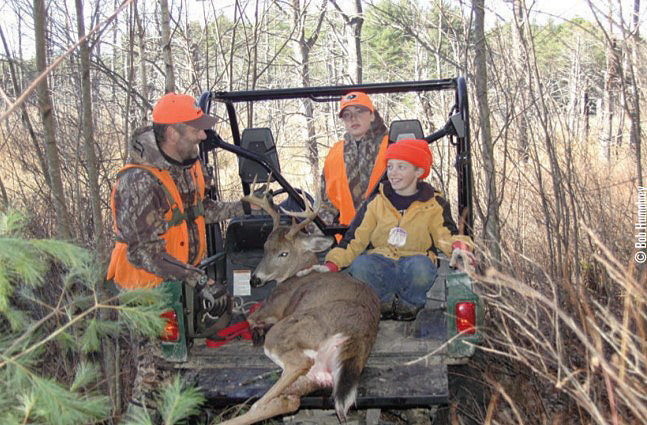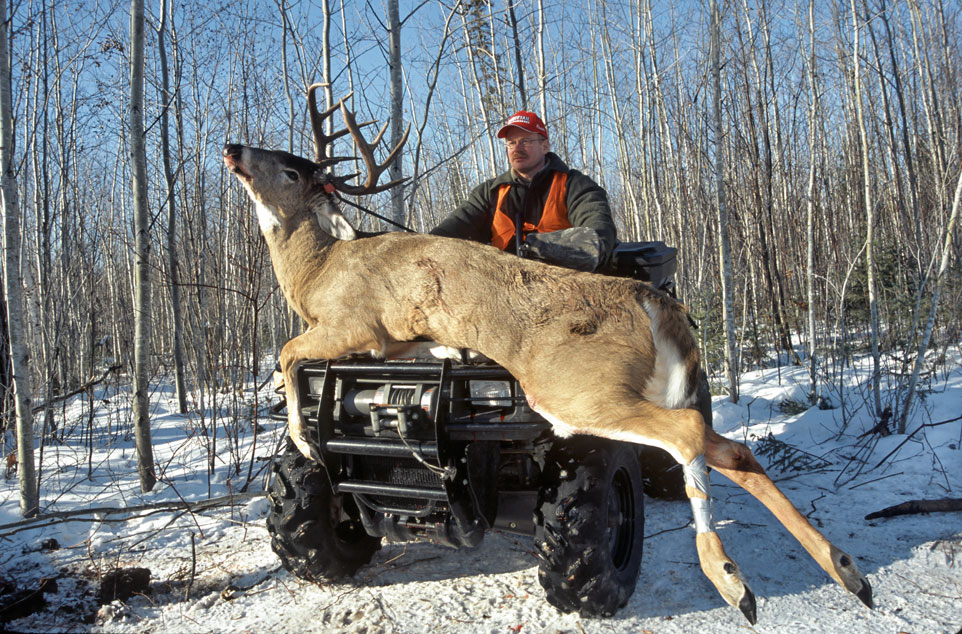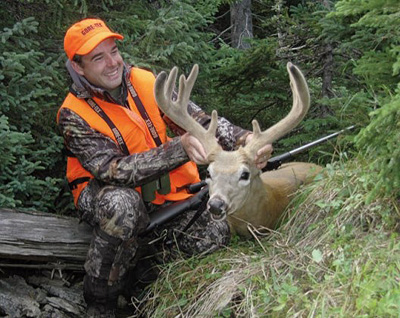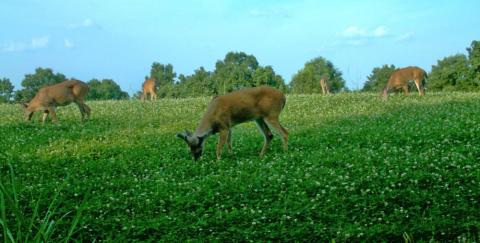Homeward Bound and Loaded Down
Bob Humphrey | Originally published in GameKeepers: Farming for Wildlife Magazine. To subscribe, click here.
Two hunters were dragging a deer out of the woods by its hind legs when they came upon a warden. After checking their licenses and confirming that all was as it should be he asked them, "You fellas know you're dragging that deer the wrong way?" Confused looks came over both their faces as they turned first toward each other, then back to the warden. "We had no idea," one hunter said to the warden. "Thanks." With that, they each grabbed a leg, turned the deer around and started dragging it in the other direction. (Insert rim shot here). It's a humorous story, and transporting any hard-won game should be a light-hearted affair. But it can become a serious matter if proper consideration is not given to doing it safely.
None of us are getting any younger. At my last physical exam the doctor told me my blood pressure levels were normal, “for my age,” but that puts me at risk, because of my age. A quick look at hunter demographics shows I'm not alone. The majority of hunters are of an age where physical exertion poses increased risk of health problems like heart attacks. The same holds true for younger folks who may not be in perfect physical condition, or any folks with undiagnosed heart problems or other physical ailments. What follows is some advice on how to get your game out of the woods safely.

Shape Up
While it may not be the easiest or most Palatable for some, the most obvious first step to avoid potential health risk is getting in shape. Most folks probably figure they're fit enough to walk to and from their stands and that's good enough. They fail to consider what happens should they actually connect with a deer or other big game animal and need to deal with the work that follows.
Take Your Time

You want to get your game out of the field as soon as possible, particularly if it's warm, but no animal is worth risking your health over. Drag only as far as you can without over-exerting yourself. Take frequent breaks as needed and move the animal incrementally.
Enlist Help
Hunters are typically a self-sufficient lot, preferring to do things themselves. They may not want to inconvenience friends or family but it will be a lot more inconvenient for them searching for you in the dark when you fail to return to home or camp at the end of the day. For some it's a matter of pride, but “pride often goeth before the fall.” Don't be too shy or too proud to enlist help. Besides, having someone to share the experience with makes it all the richer. Recruiting help doesn't just mean finding someone else to grab the other antler. It also includes enlisting the aid of machines. "Use your brain, not your brawn," my father used to tell me. And there are numerous options.
The simplest would be some type of tarp or sled so the carcass slides along more easily. The next would be employing a wheeled cart, and there are several varieties available. I once used a wheelbarrow to haul a deer out from deep in a public hunting area. I now own a two-wheeled deer cart that can be disassembled and carried like a back-pack. Perhaps the easiest way, from a labor standpoint, is to simply load the deer into/onto an ATV or truck. If you're alone, the challenge then becomes getting it from the ground to the bed or the racks. Fortunately, there's an array of commercial products to choose from.

Lighten the Load
For whatever reason, some hunters prefer taking their animals out in the round. That's not too much of a problem for small to medium-sized big game animals like deer and antelope, particularly if you're near a road or trail where you can drag them a short distance to a truck or ATV. If you have to drag any distance however, it makes more sense to field dress the animal first. Internal organs can Lighten the Load For whatever reason, some hunters prefer taking their animals out in the round. That's not too much of a problem for small to medium-sized big game animals like deer and antelope, particularly if you're near a road or trail where you can drag them a short distance to a truck or ATV. If you have to drag any distance however, it makes more sense to field dress the animal first. Internal organs can make up as much as 30 percent of an animal's body weight. A big northern whitetail might weigh well over 300 pounds on the hoof. That could mean as much as 100 pounds of extra weight you don't need to remove from the field.
For larger game like moose and elk you often have no choice. That's where quartering becomes a more viable method. Laws vary from state to state on what you must take, but most require you to retrieve all edible portions. You can further reduce weight by cutting off lower legs and even boning out the hind quarters. You'll also want to remove the backstraps and tenderloins, and possibly the neck. Obviously, if it's a trophy animal, you'll want to take the cape and head too. You may be able to haul individual portions on a pack frame. But a moose or a big elk quarter can weigh as much as a deer, and is more easily hauled on an ATV or horse.
Field Dressing

Make sure you take the proper steps to get your game
safely out of the field. It’s also important to do things right to
preserve the beauty of a trophy like this velvet-rack buck.
Speaking of field dressing, there are a few steps you can take to do that more safely as well. One is to take your time. No matter what the conditions, there’s no need to hurry, especially when wielding a sharp knife. And never, ever cut toward yourself. Make sure you have adequate lighting as well if field dressing after dark. Be particularly careful when bowhunting if you haven’t recovered the entire arrow as the broadhead could still be inside the carcass. Rubber gloves are also a good idea. Though rare, it is possible to get an infection, particularly if you have any open wounds on your hands.
Conclusion
So much goes into reducing your game to possession. You put a lot of time and effort into making it all come together. When it does, take the extra time and effort to ensure you get that hard-won prize safely back to camp or home as well.































